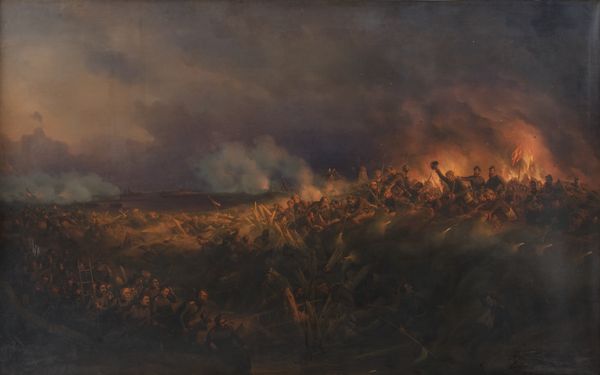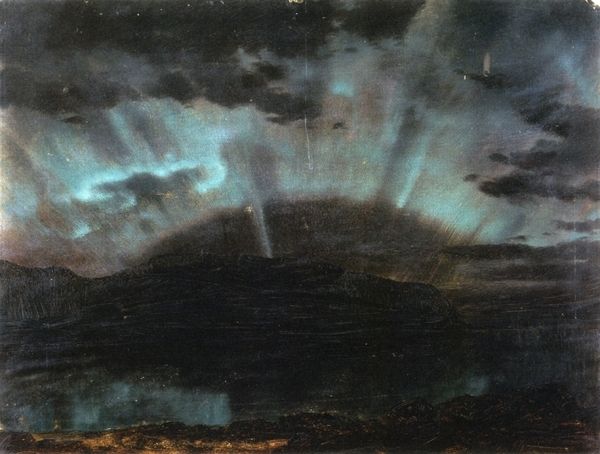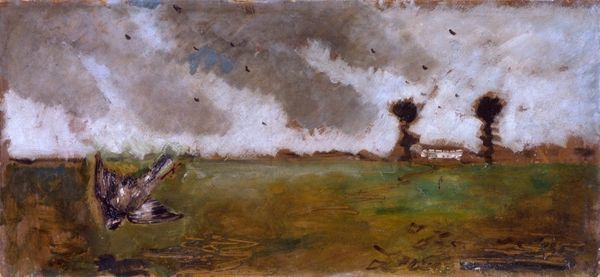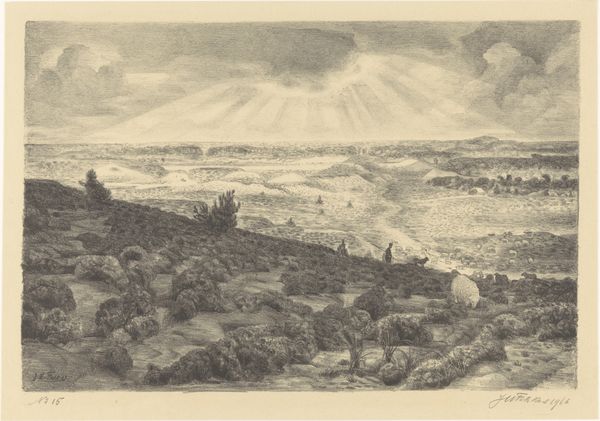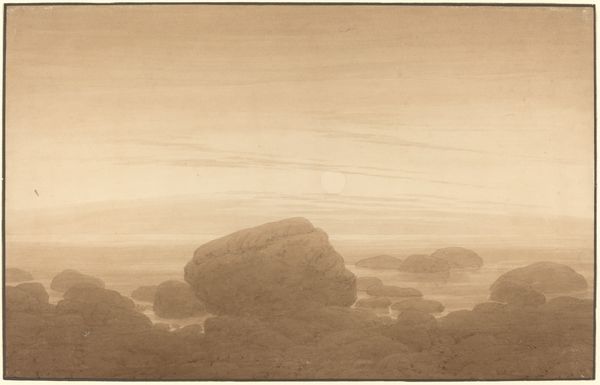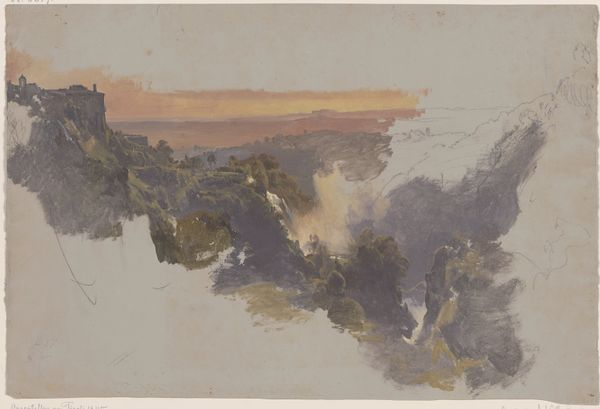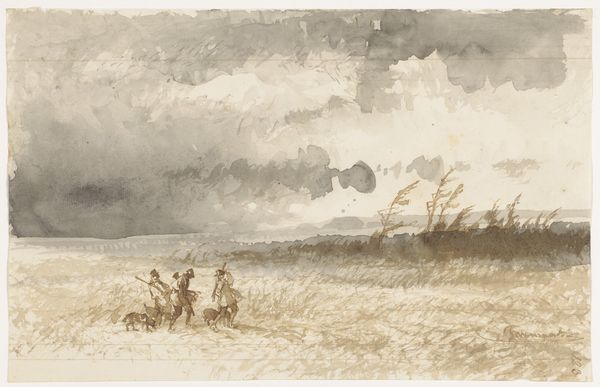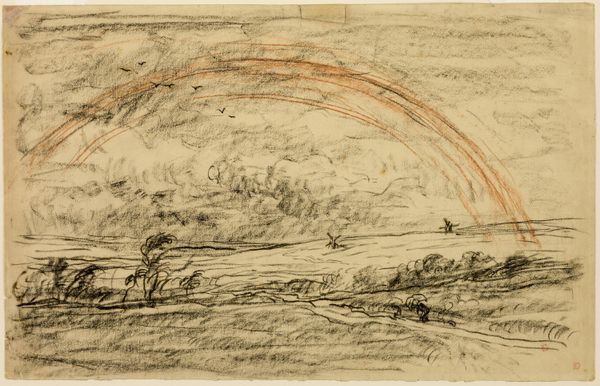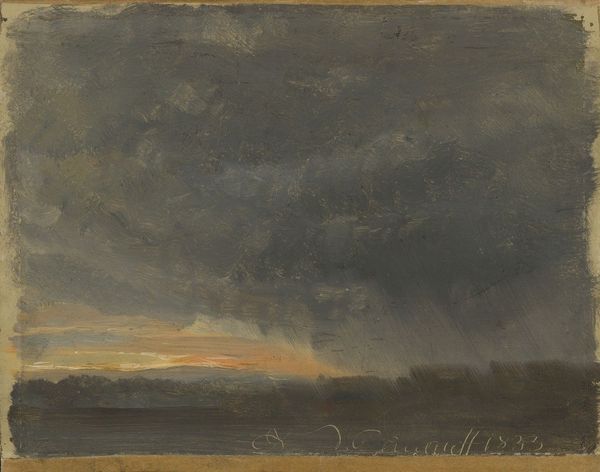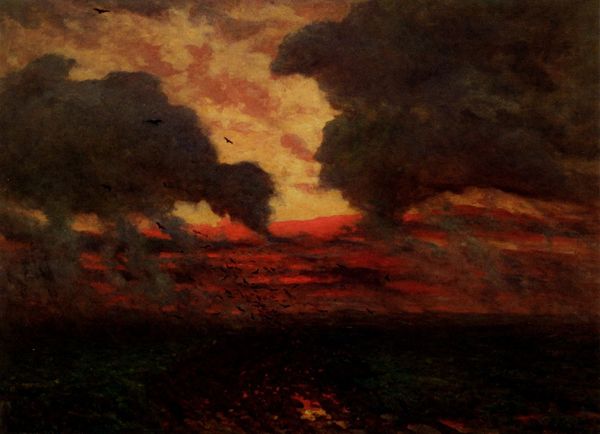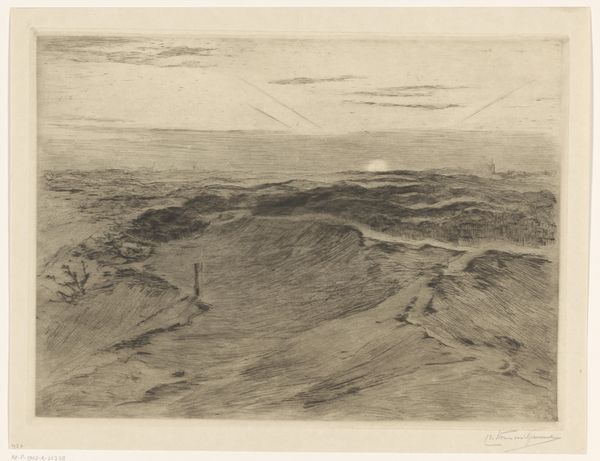
Newcastle at Night from the Rabbit Banks, Gateshead 1864
0:00
0:00
Dimensions: Sheet: 4 in. × 8 3/16 in. (10.1 × 20.8 cm)
Copyright: Public Domain
Curator: Looking at George Price Boyce's 1864 watercolor, "Newcastle at Night from the Rabbit Banks, Gateshead", my immediate impression is one of intense melancholy, with glimmers of an almost ominous, industrial beauty. What's striking to you about it? Editor: It’s an intriguing choice to capture the burgeoning industrial landscape through a romantic, almost pastoral lens. The work resides here at the Metropolitan Museum of Art and its creation coincides with a significant shift in British social history – the peak of the Industrial Revolution. I’m interested in what the symbolic interplay might reveal. Curator: Absolutely, the smoke stacks belching fire evoke powerful cultural associations that move far beyond what we would understand now. I find myself thinking about hellscapes in religious iconography—that primal fear of darkness disrupted only by unpredictable bursts of light. The artist cleverly contrasts the glowing factories and furnaces with the natural world. Editor: Precisely, this contrast feels deliberate. The rabbit banks, a somewhat archaic term, hint at a pre-industrial past. The lights coming from Newcastle almost threaten that former bucolic existence. It also raises questions about visibility and the control of visual narratives. Who controls the depiction of this moment? Boyce, observing from afar? The factory owners? Curator: That resonates. This piece almost certainly is saying something about cultural memory as well. Note how the figures and structures, those glowing spots, are obscured by the haze. It becomes less about a realistic portrayal and more about the symbolic weight of the transformation, capturing a specific historical experience. Editor: Right, there is something interesting happening by staging a scene between looking outward to an industrialized landscape and positioning the spectator, that is, us, viewing history from the sidelines of green open space. I agree that this choice certainly opens it up to diverse symbolic meanings, far removed from pure record keeping. Curator: The painting seems to suggest a psychological reckoning, a cultural transformation being rendered into something personally haunting, maybe? And what might that say about us, now, witnessing that moment from our own vantage point, generations removed? Editor: Well, by representing industrialization through the vocabulary of romanticism, Boyce effectively shaped its reception for later audiences, influencing how subsequent generations viewed this complex chapter. It becomes less an objective record and more a highly constructed argument about change and loss. A rather effective message, I must admit. Curator: Definitely, food for thought. A compelling work to explore for its layered perspectives. Editor: Indeed. It has really highlighted how art functions not just as a mirror, but also as a lens through which society interprets its past and, by extension, its future.
Comments
No comments
Be the first to comment and join the conversation on the ultimate creative platform.
